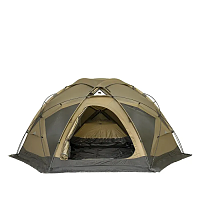Cart
Safety Tips for Dispersed Camping: Enjoy Nature Responsibly
Introduction:
Dispersed camping offers outdoor enthusiasts the opportunity to connect with nature in remote and undeveloped areas. While it allows for a unique and immersive experience, it's important to prioritize safety when participating in dispersed camping. Being prepared, knowledgeable, and responsible ensures a safe and enjoyable adventure. In this detailed guide, we will provide essential safety tips to help you navigate the challenges of dispersed camping and make the most of your outdoor experience.
I. Research and Planning:
Monitor weather forecasts for your camping location. Be aware of potential storms, extreme temperatures, or other weather-related hazards that may impact your safety. Adjust your plans accordingly and pack appropriate gear.
II. Essential Safety Gear:
Bring a fully charged cell phone as well as a backup power source. In remote areas with limited reception, consider investing in a satellite communicator or personal locator beacon (PLB) for emergencies.
III. Campfire Safety:
Never leave a campfire unattended. Completely extinguish fires by pouring water over the fire, stirring the ashes, and repeating the process until everything is cool to the touch. Never leave smoldering embers.
At POMOLY Find the Best Camping Gear for You
IV. Wildlife Safety:
Dispose of trash properly in designated containers or pack it out with you. Leaving trash behind can attract wildlife and create harmful interactions.
V. Leave No Trace Principles:
Observe wildlife from a distance and avoid disturbing their natural behavior. Stay on designated trails to prevent damage to vegetation and minimize erosion.
VI. Emergency Preparedness:
Familiarize yourself with basic first aid procedures and wilderness survival techniques. Take a first aid and CPR course to enhance your knowledge and confidence.
Conclusion:
- Contact Us
-

About Pomoly
Pomoly is a leading camping brand specializing in hot tents and tent stoves. We are camping life explorer, Follow Page / Join Group, let's make camping enjoyful together!
Working Hours
Mon-Fri, 09:00 - 17:00

- Company Info
- NEWS
- About us
- Pomoly Name
- Leave-No-Trace
- Contact Now
- Facebook Group
- YouTube Learning
- Contact Us
- Topic Collections
- Policies & Terms
- Payment Policy
- Shipping Policy
- Return & Refund
- Privacy Policy
- Terms of Use
- Tax Policy
- Website Disclaimer
- Safety Disclaimer
- Warranty Policy
- Promotion Policy
- Pre-order Policy
- INTELLECTUAL PROPERTY RIGHTS
- Dealers Agreement And Terms
- Become Affiliate
- User Center
- Forget Password
- My Orders
- Tracking Order
- My Account
- Register
- Popular Searches
-
Tipi Tents Dome Tents Camping Tent Hammock Stove Camping Camping Pellet Stove Circle 6 Titanium Water TankDome X Locomotive 20 LEO 2 camping tent T-Brick 2.0 T1 2.0 tent stove Dweller wood stove Oroqen 2.0 Chimney Water Tank Lumberjack STOVEHUT Bromance 70 Tipi Pomoly Coupon Baker Oven Stove Titanium elbow Fire Pits Tent Stove titanium Stove Outdoor Pellet Stove
keebon pellet stove






